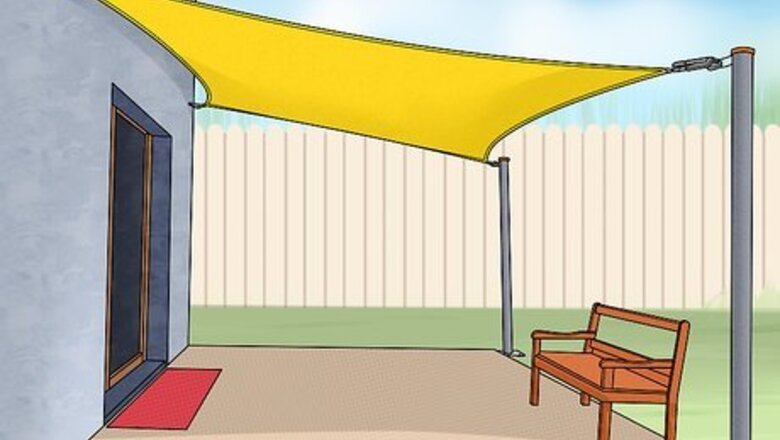
views
Figuring out Placement
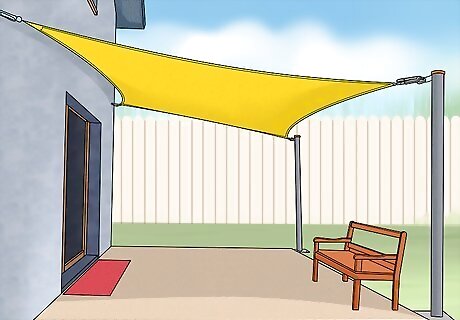
Spread the sun shade out in the designated area. While you can simply measure instead, spreading the fabric out will give you a much better idea of what it will look like when it's installed. You can move it around and adjust where you want it to go. Keep in mind you can install sun shades at an angle from the ground, which will reduce some of the width or length of the shade, depending on how you angle it.
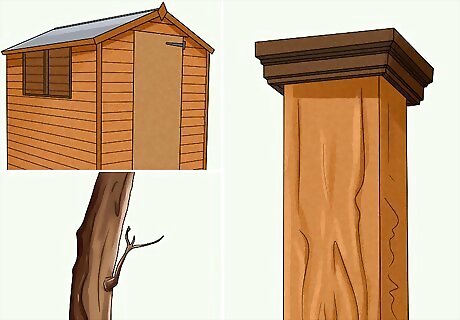
Determine where you will attach the shade. You can attach your shade to standing structures, such as the house, a shed, or even a sturdy tree branch. If you don't have these options, you'll need posts to attach the shade to. Lay these out to make sure they'll fit where you want them to go. Try 10 ft (3.0 m) pressure-treated wood posts that are 6 by 6 inches (15 by 15 cm). You can also use 5 by 5 inches (13 by 13 cm) steel posts. Steel will last longer but costs more. The area you need for the shade will be slightly larger than the fabric looks when just laid out. You'll create tension when attaching the shade, which will stretch it out. Plus, you need to add extra space on the ends, where you will use the shade hardware to attach the shade to the posts. You'll need a space that's about 10% bigger than the shade itself. For instance, if one side of your shade is 6 feet (1.8 m), then the gap at each of those corners should be about 0.6 feet (0.18 m).
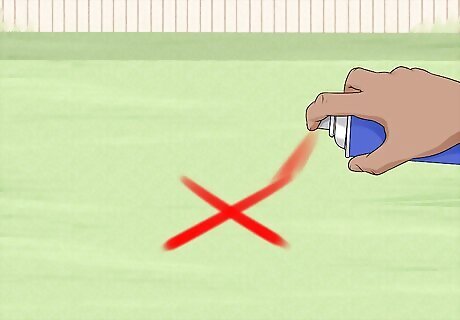
Mark the points where you want to place posts. You can use spray paint on grass to mark the area. Alternatively, make an "X" in the ground with a small spade so you can find the spot again later. Another option is to set rocks where you are planning to put the posts.
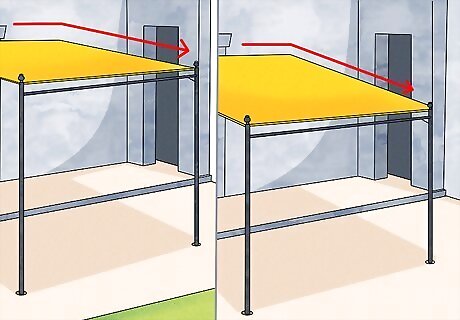
Decide how high you want each corner of the shade to be. You can simply stretch the shade so it's the same height across the yard, if that's your preference. You can also vary the height a little, going from higher at one end to lower at the other. It all depends on your preference. Angling the shade can provide some wind protection. You need to decide on heights now, so that you get posts that are the correct size.

Call your local city officials before you dig. When you dig in your yard, you need to have the area marked first. City officials will come out and mark gas, water, and power lines that are buried beneath the ground so you don't hit them. Adjust the area as needed once the lines are marked.
Installing Posts
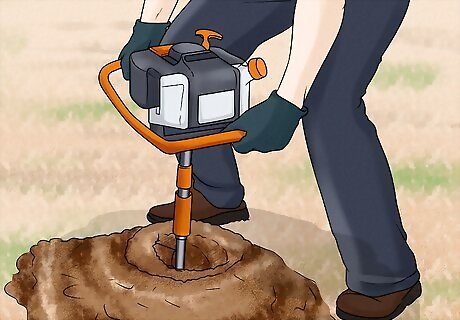
Dig holes for the posts. The easiest way to dig the holes is to use a post hole digger. Some are manual and others are automated, but either one will work. Just be sure to pick one that is larger in diameter than your posts by several inches/centimeters. You can rent or buy post hole diggers at your local home improvement store. Digging posts holes with just a shovel is very difficult, as you will have trouble getting to the depth you need while keeping the hole relatively narrow. Dig the holes at least 3 feet (0.91 m) deep, though it's even better to make them 1/3 of the full length of the pole. Therefore, if you have posts that are 12 feet (3.7 m) tall, you should dig down about 4 feet (1.2 m). If you're having trouble getting the soil out, wet it down and come back the next day. The soil will be softer and easier to dig out.
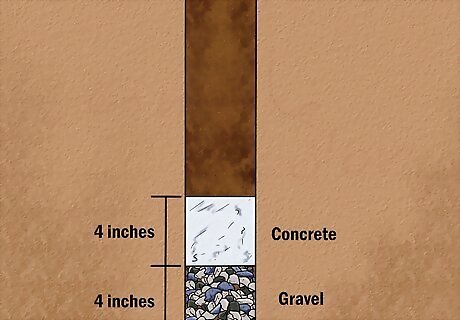
Make the base with gravel and concrete. Pour gravel into the hole until it reaches about 4 inches (10 cm). Pour in concrete on top of the gravel, filling in another 4 inches (10 cm) or so. Adding this mixture in first makes it easier to balance the posts, as you are creating a solid base.
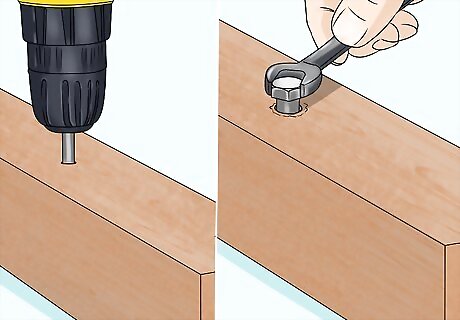
Screw in coach bolts near the bottom of the posts. Use a drill bit the same size as the coach bolt. Drill into the metal or wood, creating holes for the coach bolts. Screw the bolts into place, and secure them with a washer as needed. You'll need washers for sure if you're using metal posts. It's okay to let the concrete dry a little while you're putting in the coach bolts, as it is forming a solid base for the posts. The coach bolts provide leverage to help keep the posts in place. Use a drill bit made for the material you're drilling into. Go slow and steady when drilling. If you push down too hard, you can break the bit or crack the wood.
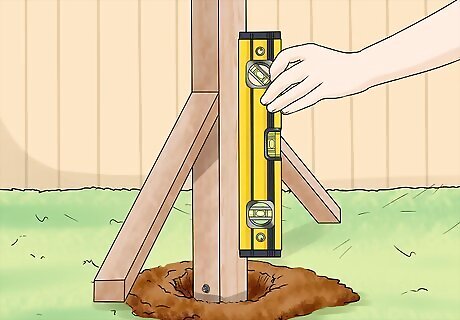
Drop the posts in the holes. Push the posts down into the holes. Use pieces of wood to prop them up so they stand up straight. Check to see if the posts are standing up straight by using a level. The side with the coach bolts should go down in the hole.
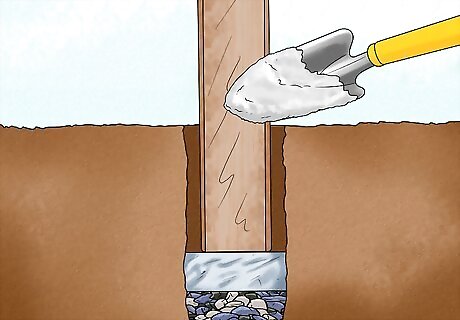
Pour the concrete into the post holes. Use a shovel to pour the concrete into the hole. You can also pour it straight from a bucket if that's easier for you. Try to pour it evenly all around the post. Stab the concrete in the hole with your shovel to make sure it's packed down without air holes. If you run into any dry portions in the concrete, don't put that in your post hole. It will create weak spots.
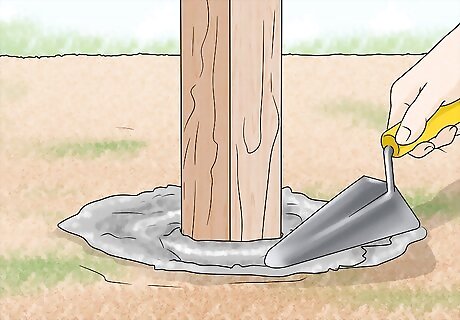
Level off the top of the concrete with a spatula or trowel. The top of the concrete will be visible. Take off the excess so it looks nicer, and then smooth it out. Run a concrete spatula over the area to create a smooth surface. If you moved the braces to pour in the cement, put them back in place to hold up the post while it dries. It will take at least day for the concrete to dry. Leaving it for 2 days is even better.
Attaching the Sun Shade
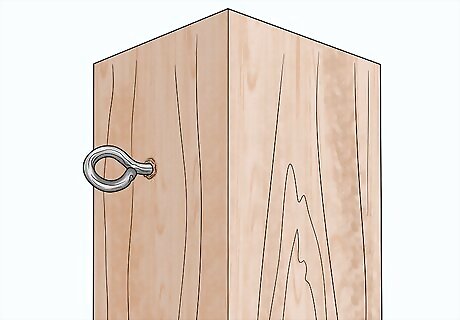
Install an eye lag screw or an eye bolt at the height you want to hang the sails. Use eye lag screws for wood or eye bolts for metal. Start by drilling into the post, using the same size drill bit as your eye lag screws or eye bolts. Screw the eye lags or bolts into place. You'll likely need a ladder to reach where you want to install the hardware. Add a washer on the back if you're using eye bolts.
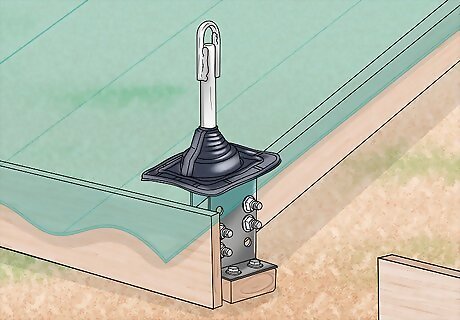
Install the hardware on other attachment points if you're using them. If you're attaching it to your house, you'll need to add a fascia support bracket. The fascia is the band that runs right under your roof. A bracket helps reinforce the area so the shade doesn't put too much pressure on the fascia. The bracket goes behind the fascia on the rafters in between the house and the fascia. It has a piece that goes through the fascia, which is where you will screw in an eye hook. Drill from the back of the fascia with a small drill bit, using the bracket as a guide. Drill from the front with a larger drill bit. Stick the screwing mechanism on the bracket through the fascia so it comes out the front. The bracket should be flat against the rafter on the other side. Drill through the rafter with a 0.5 in (1.3 cm) drill bit in 2 places, going through the holes on the bracket. Stick 0.5 in (1.3 cm) bolts through the holes, and secure them with washers on the other side. Screw in the eye hook on the front of the fascia.
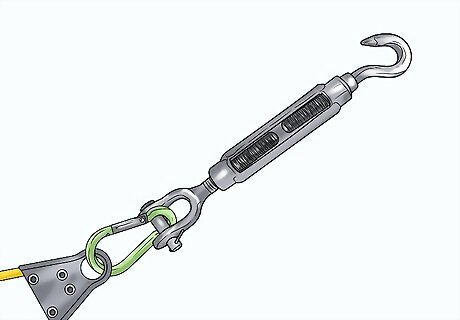
Attach the turnbuckles and snap hooks or carbines to the sail. A turnbuckle is a device that lets you adjust tension. Use snap hooks or carbines to attach it to the corners of the sail. The corners of the shade should have grommets or steel rings in place. Just attach the hook to the turnbuckle, and then slide it into place over the corner of the shade. For one corner, it's sometimes better to use a tension strap. This corner will be the last one you put on. A tension strap is just a stretchy piece that you'll use in place of the turnbuckle. You can find them at hardware stores, but one may also have come in your shade hardware kit.
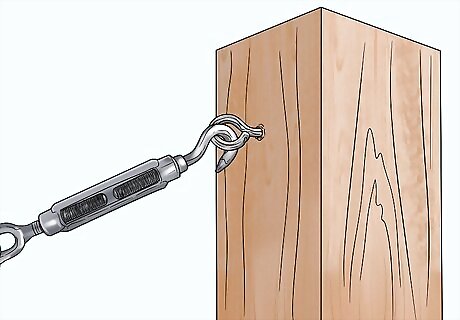
Hook the corners on to the posts. Slip the hooks on the other side of the turnbuckle into the eye attachments on the posts or your house. Leave 1 corner unhooked while you adjust the tension on the others. Turn the turnbuckle to increase the tension on the attached corners. If you're having trouble attaching a corner because it's not long enough, you can add a couple of carabiner hooks to make it longer.
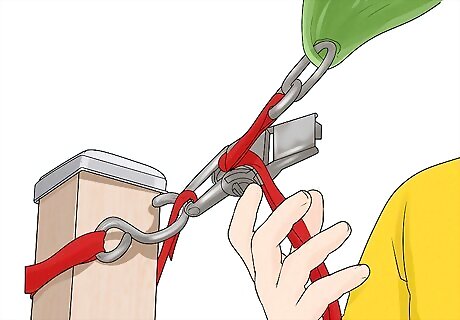
Secure the last corner by stretching out the tension strap. The last corner should have a tension strap instead of a turnbuckle. That's because it will be harder to put it in place than other corners, due to the tension you've already created. Stretch the shade out, and hook it on the last eye attachment.

















Comments
0 comment